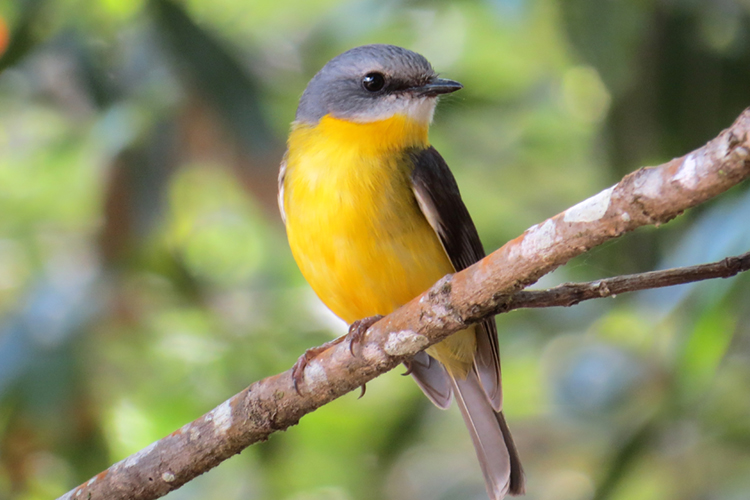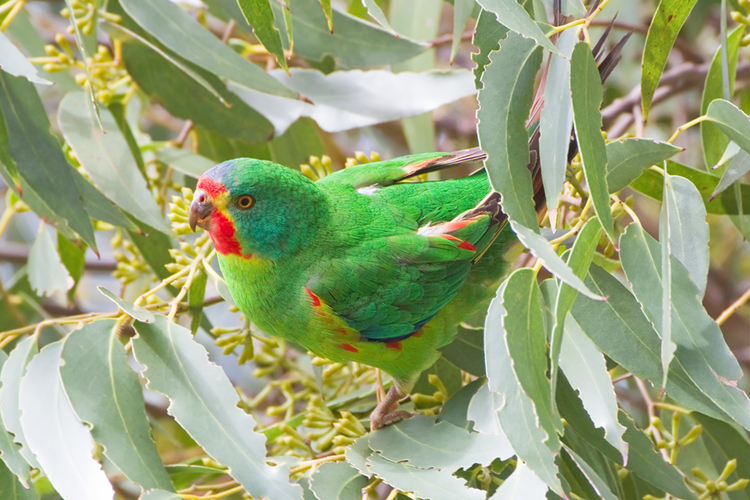
Native birds in South-eastern Australia worst affected by habitat loss
Tuesday, 03 September 2019New research has found that habitat loss is a major concern for hundreds of Australian bird species, and south-eastern Australia has been the worst affected.
The Threatened Species Recovery Hub study found that half of all native bird species have each lost almost two-thirds of their natural habitat across Victoria, parts of South Australia and New South Wales. 
Where the most bird species are impacted by habitat loss. Grey zones indicate parts of Australia where little habitat loss has occurred. Blue zones have up to 90 species affected by habitat loss, yellow is up to 120 species affected, while the highest category, red, is up to 187 species affected. Image: Conservation Biology.
Lead researcher Dr Jeremy Simmonds from The University of Queensland said the team looked at both threatened and non-threatened birds, including common species.
“Common species play a vital role in services like controlling insect pests and pollination. Their decline, through loss of habitat, has implications for the health of ecosystems.

Australia’s iconic parrots have been particularly hard hit by habitat loss. Forty percent of our parrots have each lost at least 40% of their habitat. Loss of habitat has not only affected threatened species like the swift parrot (shown); familiar birds of our cities and countryside like noisy lorikeets, colourful rosellas and majestic cockatoos have suffered extensive habitat loss as well. Image: JJ Harrison (www.jjharrison.com.au) CC BY SA 3.0 Wikimedia Commons
“Along with feral and invasive species, habitat destruction is among the greatest threats facing biodiversity in Australia, so it is important to understand how big the problem of habitat removal is: our research developed a method to do this, called the Loss Index.

Most birds of the arid zone have experienced relatively little habitat loss. Extensive tracts of shrubland and woodland remain, supporting species like the zebra finch. Image: Peripitus CC BY SA 3.0 Wikimedia Commons
Northern Australia and Australia’s arid zone have had the least habitat loss, as there has been much less vegetation clearing across that region.
“We also looked at different bird groups and found that Australia’s parrot species are more impacted by habitat loss, compared with birds of prey, like eagles and owls, which have been less affected as a group.
“It helps to show that every hectare of native vegetation that is removed chips away at remaining habitat for dozens and sometimes hundreds of species including common species which typically do not receive conservation attention,” he said.

“The quality of the remaining habitat is often reduced, due to weeds, grazing and changed fire patterns, such as more and hotter fires, and this can further reduce the number and type of birds that an area can support.”
The research was conducted by the Threatened Species Recovery Hub of the Australian Government’s National Environmental Science Program, a national initiative to undertake science to help save Australia’s threatened species.
It was published in Conservation Biology (DOI: 10.1111/cobi.13331).
For further information contact Dr Jeremy Simmonds - j.simmonds1@uq.edu.au
Top image: Eastern yellow robin. Photo: Graham Winterflood CC BY-SA 2.0 Wikimedia Commons